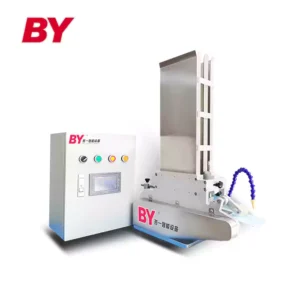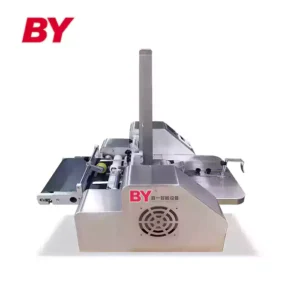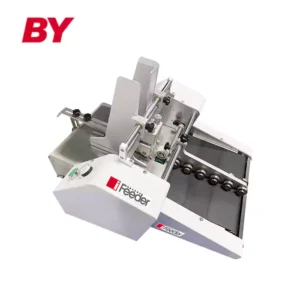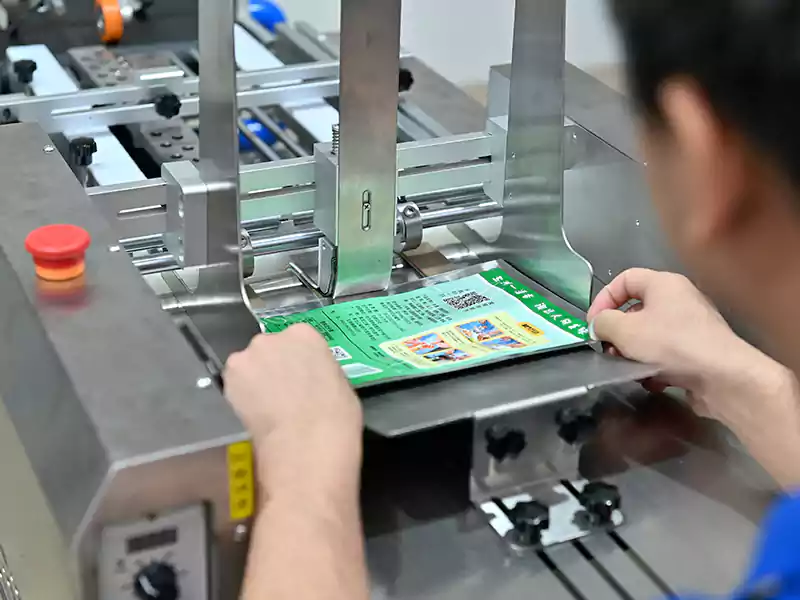Related Products
-
KN95 N95 Dust Face Mask Feeder Machine with Printer
-
Leaflet Feeder Machines for Production Lines
-
Pouch Carton Collation Paper Friction Feeder Machine for Sale
Tired of production bottlenecks and paper jams on your inkjet presses or labeling lines? In fast-paced industrial environments, every second counts. Whether you’re printing variable data on paper or labeling high-volume product batches, manual feeding can cause delays, misalignment, and costly downtime. That’s where paper feeders come in. They can increase the production efficiency of paper enterprises by 40%.
What is a Paper Feeder Machine?
Paper feeder machines are mission-critical components that automate the feeding of sheets with precision and reliability. They are integrated into printing and cutting systems as well as packaging machines. By replacing manual feeding papers, paper feeders deliver:
- Operational Continuity: Minimize downtime in high-volume workflows.
- Process Standardization: Ensure consistent alignment for error-free output.
- Core Business Value Proposition: In high-volume environments, paper feeder machines can reduce labor costs by up to 40% while increasing throughput by 20-60%.
Paper Feeder Mechanism Analysis: Two Models for Enterprise Needs
The optimal mechanism depends on the balance between productivity targets and material specifications.
Comparing Friction vs. Vacuum Paper Feeders
When choosing a paper feeder mechanism, one key distinction lies in the feeding mechanism: friction vs. vacuum. Each method offers unique advantages depending on your media type, speed requirements, and production setup.
| Feature | Friction Paper Feeders | Vacuum Paper Feeders |
| Feeding Mechanism | Uses rubber rollers to grip and push sheets from the top or bottom | Uses suction force through holes in a vacuum belt or plate |
| Best for Media Types | Coated labels, paper, cards, PVC sheets, blister cards | Thin paper, magazine pages, uncoated or porous stock |
| Speed & Throughput | High-speed (up to 150 ppm); great for rigid or semi-rigid sheets | Generally, more expensive due to the the vacuum system hardware |
| Precision | High precision with consistent contact | Ultra-high accuracy for fragile or slippery sheets |
| Maintenance | Simple (roller cleaning/replacement) | More complex (requires vacuum pump maintenance) |
| Cost | More affordable | Generally, more expensive due to the vacuum system hardware |
| Power Requirement | 500–1000W typically sufficient | Requires an additional vacuum generator or pump system |
Key Features & Technical Specifications
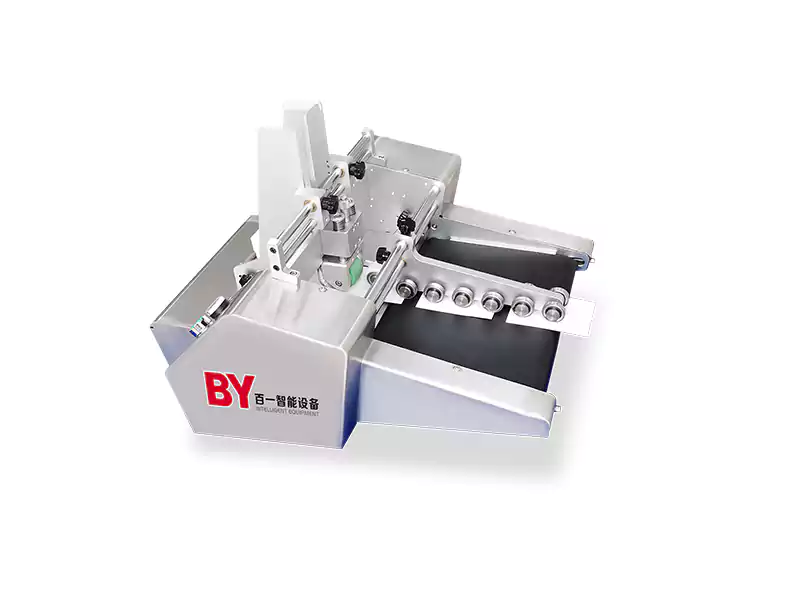
| Size | 490X570X350mm | Power | 500W |
| Belt Running Speed | 0-120m/min | Transmission Mode | AC servo motor |
| Control Mode | Touch screen+PLC control | Material Thickness | 0.012-0.15mm |
| Body Material | Standard carbon steel baking paint | Equipment Weight | 20-25KG |
| Efficiency | 0-300 pieces/minute (Take 100mm size products as reference) | Disposable Stacking | 100mm/200PCS(depending on the specific product size) |
Seamless Integration with Inkjet Printers & Labeling Machines
Paper feeder machines are designed to become an integral part of your production ecosystem:
Inkjet Printers: Mount directly to the printer’s frame using our universal bracket kit. Feed‑rate matching via real‑time encoder feedback ensures that each sheet arrives exactly when the printhead is ready.
Labeling Machines: Tension‑controlled rollers and registration sensors synchronize label placement within ±0.5 mm accuracy. Bi‑directional PLC communications allow for instant error reporting and line‑stop signals.
Custom Solutions: From conveyor‑to‑feeder transitions to full‑line automation, our engineering team provides on‑site integration services and calibration to guarantee uptime from day one.

The Benefits of Paper Feeder Mechanisms for Your Production Lines
Integrating a high-power paper feeder mechanism(500–1000W) into your production line doesn’t just automate a task—it transforms your entire workflow. Whether you’re running an inkjet printer, labeling system, or packaging line, here are the key benefits that make a paper feeder an essential piece of your automation strategy:
Increased Production Efficiency
Manual feeding creates bottlenecks. A paper feeder delivers consistent, high-speed feeding, up to 120 metres per minute, to match the pace of modern industrial lines, significantly boosting your overall throughput.
Improved Print & Label Accuracy
With precise registration controls and adjustable guides, each sheet is aligned with ±0.5 mm accuracy, reducing misprints, label misplacement, and rework. The result? Better product quality and fewer wasted materials.
Reduced Labor Costs
Automated feeding minimizes the need for manual loading or supervision. Your operators can focus on higher-value tasks instead of constantly feeding sheets, leading to lower labor costs and better utilization of your workforce.
Greater Line Uptime
Built with industrial-grade motors, wear-resistant rollers, and real-time error reporting, high-power feeders are designed for continuous 24/7 operation, keeping your production moving with minimal downtime.
Versatile Media Handling
From coated labels to PVC cards, thin paper to blister packs, paper feeders can handle a wide variety of substrates and sizes, giving you the flexibility to run multiple job types on the same line.
Seamless Integration
Our feeders are compatible with most inkjet printers, labeling systems, and control protocols (Modbus, Ethernet/IP, PLC I/O), ensuring plug-and-play installation with your existing setup.
Paper Feeder Mechanism Real‑World Case Studies
Case Study 1: High‑Volume Direct Mail Printer (Shanghai)
Challenge: A direct‑mail printing house was struggling with manual sheet feeding on its inkjet presses, resulting in frequent misfeeds, registration errors, and downtime during peak seasonal runs.
Solution: They installed our friction feeder upstream of two high‑speed inkjet lines.
Integration: Mounted directly to the press frame; encoder feedback synchronized feed rate with printheads.
Results:
- Throughput increased from 80 ppm to 140 ppm
- Registration accuracy improved to ±0.3 mm
- Downtime due to feed jams dropped by 90%
- Labor reallocated from feeding to quality control, saving 3 operator‑hours per shift
Case Study 2: Commercial Label Printer (Guangdong)
Challenge: A label printing firm needed to boost capacity on its UV inkjet label presses, handling a variety of thin, glossy substrates without slipping or static issues.
Solution: They opted for our friction feeder equipped with anti‑static brushes and high‑friction rollers.
Integration: Connected via EtherNet/IP to the press PLC; custom mounting bracket ensured precise alignment.
Results:
- Average run speed rose from 90 ppm to 120 ppm
- Feed accuracy stabilized at ±0.4 mm across mixed‑media jobs
- Static‑related misfeeds eliminated entirely
- ROI achieved in 4 months through reduced waste and labor costs
How to Choose the Right Paper Feeder Mechanism Model for Your Production Line
Selecting the ideal paper feeder ensures you hit your throughput targets, maintain precision, and maximize ROI. Here’s a step‑by‑step guide tailored for printing companies and other high‑volume operations:
- Define Your Throughput Requirements
Measure Current Speed: Track your existing sheets‑per‑minute (ppm) on each press or line.
Set Target Output: Factor in peak seasonal demands (e.g., holiday mailers) to determine your required maximum ppm.
Choose a Feeder with Headroom: If you need 120 ppm, opt for a model rated at 150 ppm to avoid running at maximum capacity continuously.
- Identify Your Media Types & Thickness
Catalog Substrates: List all paper stocks, labels, and specialty media you run—note their GSM (grams per square meter) or mil thickness.
Match Torque to Media: Higher‑wattage motors (750 W or 1000 W) deliver more torque, essential for thick cardstocks or coated labels.
Consider Roller Materials: For glossy or static‑prone media, specify anti‑static brushes and high‑friction roller coatings.
- Determine Your Integration Protocols
Control Systems: Identify whether your presses use Modbus, EtherNet/IP, ProfiNet, or simple digital I/O.
Communication Needs: If you require real‑time error reporting or speed matching, choose a feeder with the corresponding fieldbus module.
Future‑Proofing: If you plan to upgrade to Industry 4.0 or MES/SCADA integration, select a model with OPC UA or Ethernet-based protocols.
- Assess Stack Capacity & Changeover Frequency
Batch Sizes: For large runs (10,000+ sheets), larger hoppers (350–500 sheets) reduce reloads.
Changeover Impact: If you run short, varied jobs, a smaller feeder (250–350 sheet capacity) may suffice—allowing faster media swaps.
- Evaluate Footprint & Line Layout
Available Space: Measure the space beside or above your presses. Feeder dimensions vary—ensure you have clearance for mounting and maintenance.
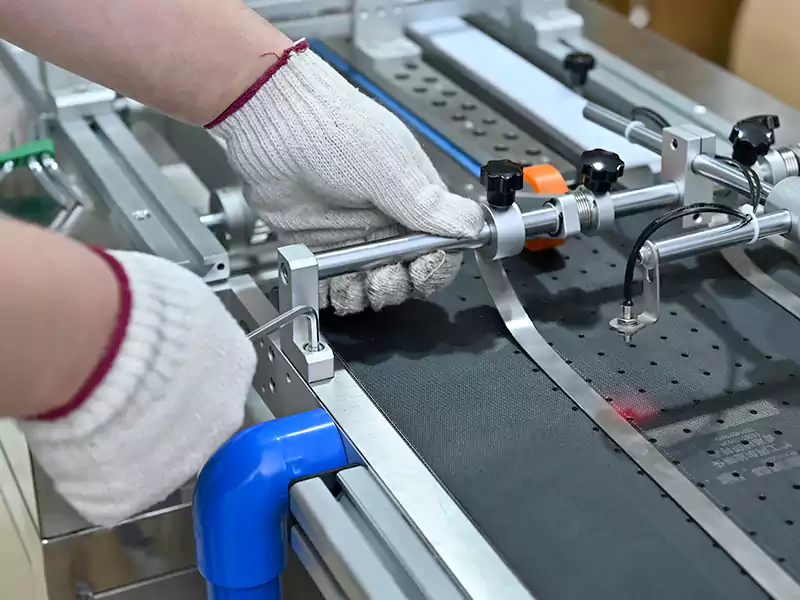
Inline vs. Offline: Decide if the feeder will mount directly to the press (inline) or feed sheets to a buffer conveyor (offline). Inline setups demand precise alignment features.
- Calculate Total Cost of Ownership (TCO)
Upfront Investment: Compare model prices
Labor Savings: Estimate operator hours saved per shift by automating feeding.
Waste Reduction: Factor in cost savings from fewer misfeeds and reprints.
Maintenance & Service: Include costs for periodic roller replacements, sensor calibrations, and optional service contracts.
- Request a Demo & Pilot Test
On‑Site Trials: Have the feeder tested on your actual presses with your media.
Performance Metrics: Verify ppm, registration accuracy, and jam rates under real‑world conditions.
Operator Feedback: Gather input from line operators on usability and setup time.
For manufacturers aiming to optimize throughput, accuracy, and labor efficiency, paper feeder machines for production lines are a strategic investment. High‑power models deliver the torque, speed, and durability required to keep modern inkjet printers, labeling machines, and packaging lines running at peak performance.

